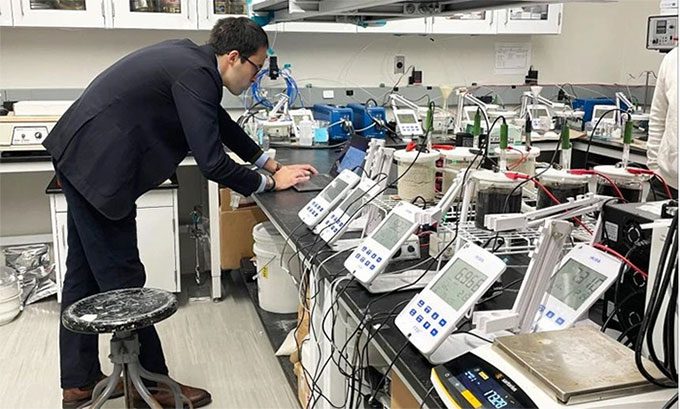Subway systems and buildings that emit heat directly into the ground can deform the earth and cause infrastructure in cities to crack.
“The ground is deforming!”
During a recent trip to Chicago, Mr. Alessandro Rotta Loria from Northwestern University in Illinois, USA, inspected the sensors that his research team has installed throughout the city to monitor subsurface temperatures.
Over 100 sensors have been placed in parking garages, boiler rooms in basements, and subway tunnels around downtown Chicago.

The laboratory analyzing the thermal data collected by the sensors on the forecast map of Chicago – (Photo: NBC NEWS).
According to Mr. Alessandro Rotta Loria’s research, the air temperature in human-made underground structures can be up to 25°C higher than surface temperatures. This poses a threat not only to human health but also to critical infrastructure.
“There is a significant amount of heat beneath our feet. And this heat has already caused the ground to deform,” Mr. Rotta Loria stated while inspecting one of his team’s sensors at the Millennium Station in the Loop district of Chicago.
Many major cities may “sink”
The newly published research in the scientific journal Nature details how heat retained beneath the surface causes a phenomenon known as “subsurface climate change”, which could lead to major cities such as Chicago, New York, and London “sinking.”
This subsurface climate change differs from atmospheric climate change, which is caused by greenhouse gases from burning fossil fuels.
Subway systems and buildings release heat directly into the underground layers. As heat spreads, the ground also deforms, potentially causing cracks in the city’s structures and infrastructure.
While researchers are concerned about the possibility of cities sinking due to heavy construction loads, the spreading heat can cause similar shifts.
Transportation Secretary Pete Buttigieg stated that underground resilience is a key focus of the administration to address another aspect of climate change.
“We are collaborating with the states on this issue. Because it may be necessary to change something from the type of cement, steel, or asphalt being used to researching heat dissipation for underground structures. It is a plan that requires time and extensive implementation,” Mr. Buttigieg told NBC News in an interview.


















































